Notes
David Degner in Cairo: Not Just Will, But Ingenuity
In studying U.S. media coverage of Wednesday’s and Thursday’s hostilities between pro- and anti-Mubarak groups, I’ve been concerned about the primitive impression of the imagery. Of course, with men battling it out mostly with sticks and stones (and horses and camels), it’s no surprise the term “medieval” would be bandied about as it has. Still, what’s important to understand — and it’s a point that Cairo-based photographer David Degner has emphasized to me — is that the use of rocks as the weapon of choice has been been the default option, by both sides, to avoid a more serious escalation. Even more significant, David emphasizes, is the point that the means of engagement might be primitive, but it would be a serious mistake to think about the people in the same terms.
It is in this spirit that David sent these images, communicating the resourcefulness and creativity of Egypt’s “populist army.” What follows is my transcript of David’s description of these “resourceful scenes.”
–Michael Shaw
1. (About the lead photo). The Egyptian opposition is way too smart to just be sitting in the street and taking rocks to the head. This group of protesters, instead, put their heads together and built a “trebuchet” or catapult to launch projectiles at anti-Mubarak groups. I thought it was pretty creative. The guy who is leading the group (not pictured) is an engineer. Listening to the conversation, one guy said he watched a National Geographic special on this and it wouldn’t work. The engineer clearly felt otherwise.
Either way, it was community engineering at work.
2. Here we see an outdoor medical clinic. Before the uprising, there was one clinic in a mosque near the square. One week later, there are now five. I first visited there last Saturday night. At that time, they were taking donations for medicine and food. When I went back yesterday, the original clinic had turned into a warehouse for donated medicine running a distribution system to the five satellite clinics.
In the mosque clinic, things run like a well-oiled machine. There is one guy on a podium, calling out orders for shipments, directing traffic, dispatching ambulances. There is one section just for treating eyes. The main type of wounds now are rock injuries. The first few days, however, it was wounds from rubber bullets fired by the police.
This outdoor version is smaller than the mosque clinic but it works the same way. The mats are set up and doctors wait for the next injured person to come in. If the injury is serious, the patient is transported to the mosque or taken away by ambulance.
3. This is one of the side streets and side entrances to Tahrir, looking in the direction of the square. The anti-Mubarak protesters early on created layers of security, conducting ID and security checks, to protect their control of the square. I wanted to show this to appreciate how the people’s fortifications have grown. They started with rocks, then tires, and now these barriers. The blue metal came from a construction site in the middle of Tahrir. The rest came from parts of burnt security trucks, window grates, whatever scrap was available. The structure is designed to block the view down the street and repel stones.
4.. I have to say, this really does seem medieval but it actually communicates the thorough organization of the resistance.
All week, people at the Square have been working in shifts. There are clinics operating behind barriers. People bringing in food and water. Guys with megaphones control all the comings-and-goings. Regarding the two men praying, they also have specific jobs. Right now, they are praying in the direction of tanks, soldiers and the square. Otherwise, though, their role is to insure that people use the sidewalks to avoid walking through the tanks. What is most interesting about the picture, though, is how self-tasked people — supporting Thursday’s counter-attack against pro-government hooligans — created these neatly-piled caches of stones.
Like I said, primitive means, not primitive people. And human ingenuity at work.
— David Degner
PHOTOGRAPHS © DAVID DEGNER
You can see the archive of all the photo-reports from BagNews since the Middle East crisis began at Middle-East Uprising 2011. You can also see David’s previous crisis post, David Degner in Cairo: No Longer About Freedom of Speech But Life and Death and “David Degner in Cairo: The End of the Show?” here at BagNewsOriginals. You can also see David’s photo-story on the outbreak of the current crisis at the Wall Street Journal. For his photo-documentation of life in Cairo, including more crisis images, visit his website, DavidDenger.com.
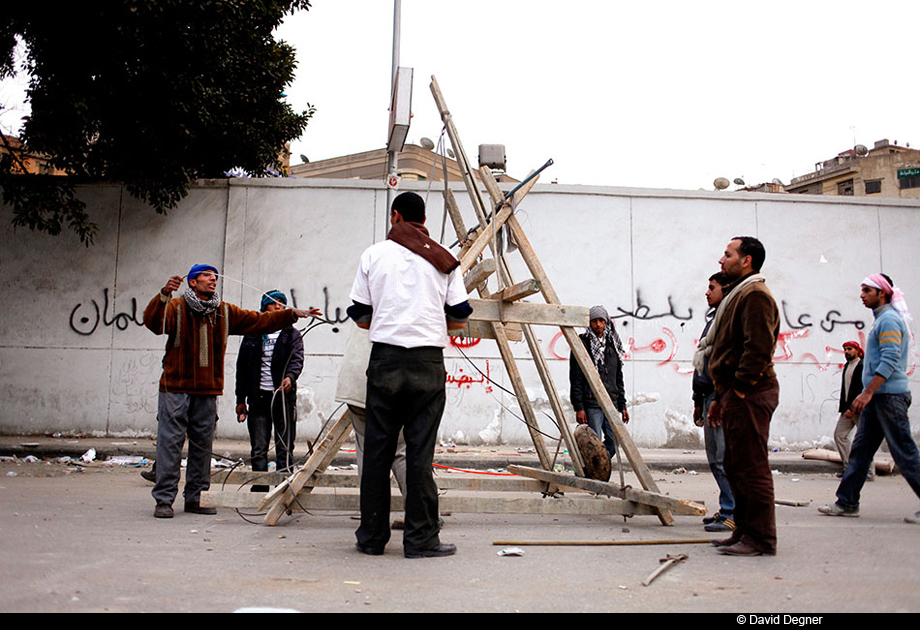
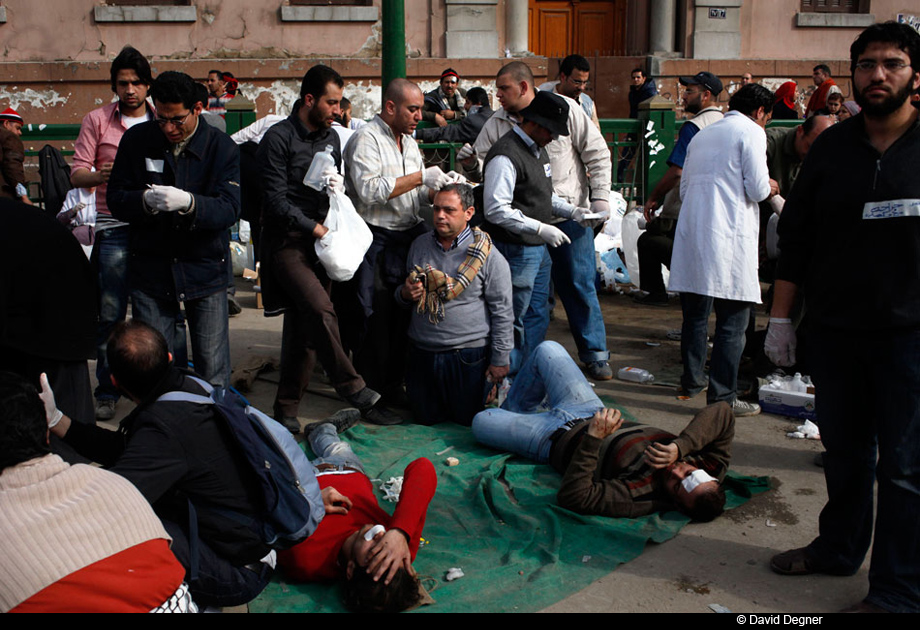
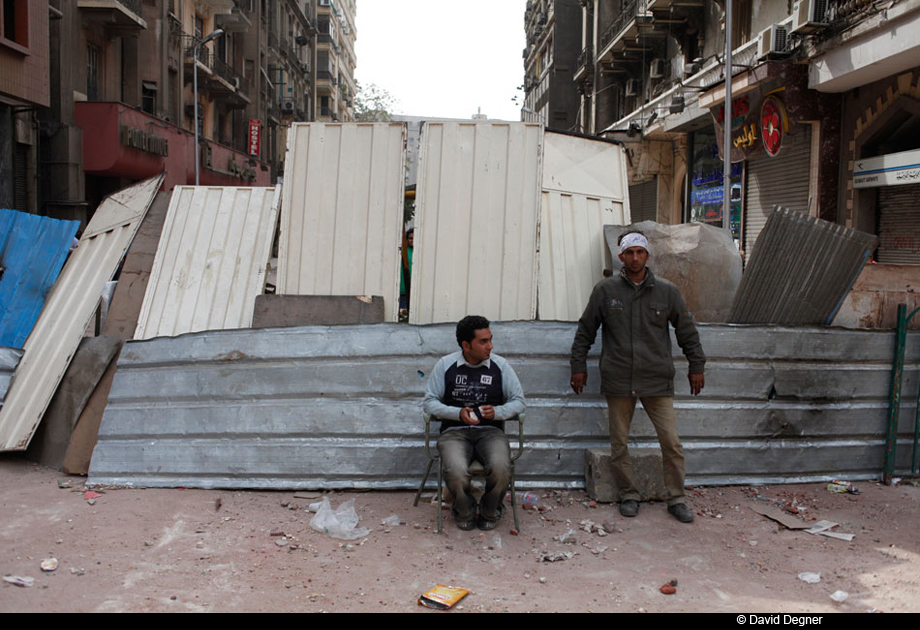
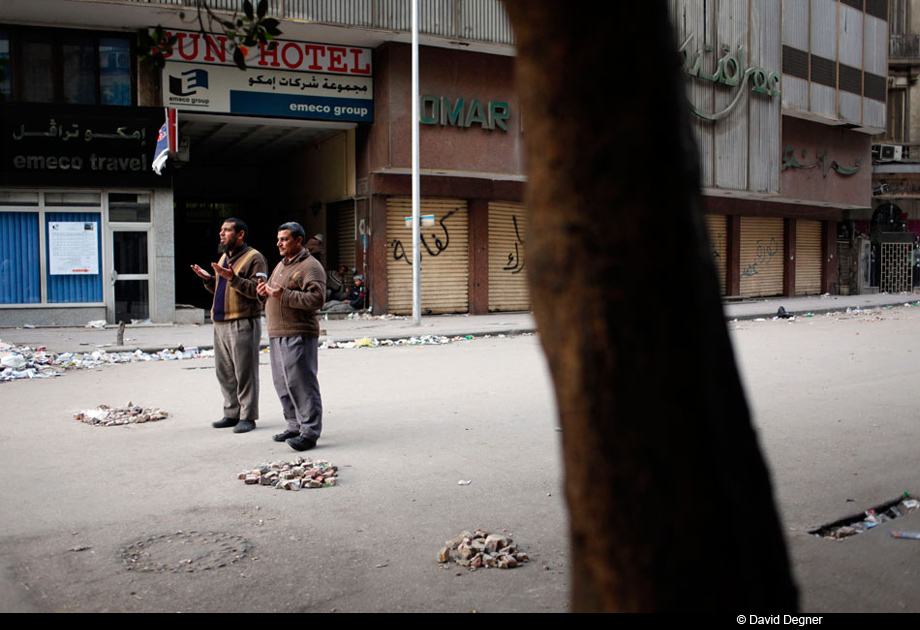
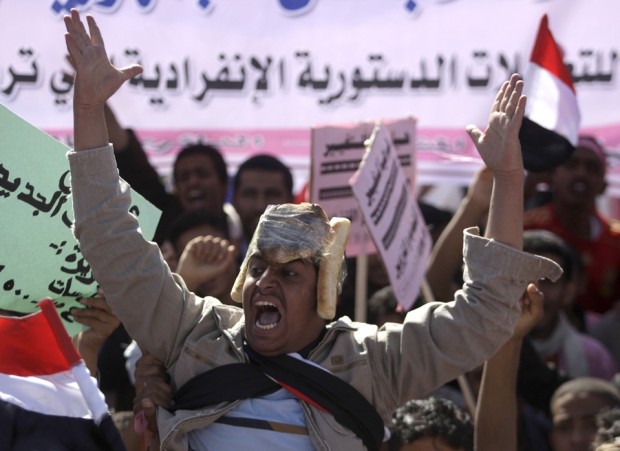

Reactions
Comments Powered by Disqus